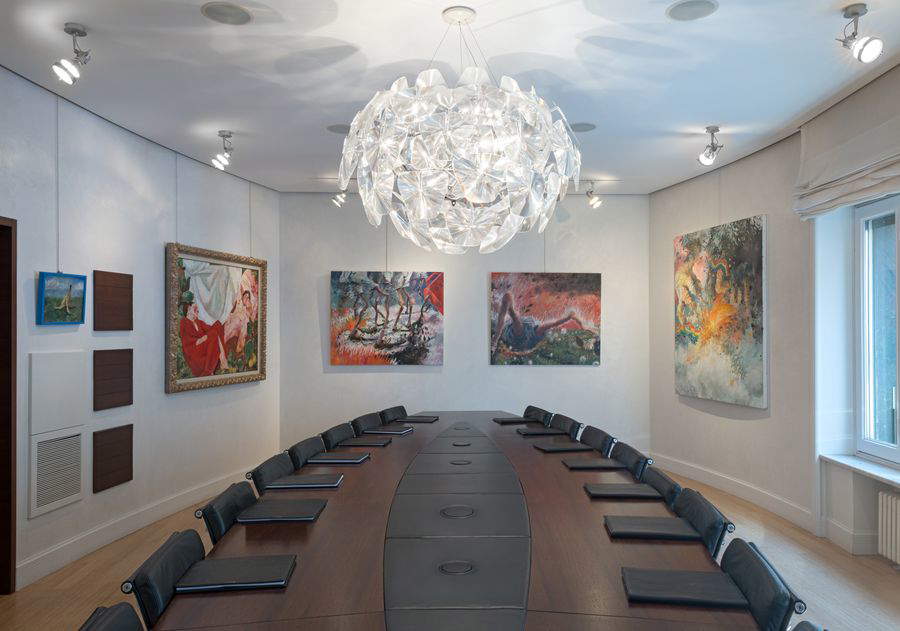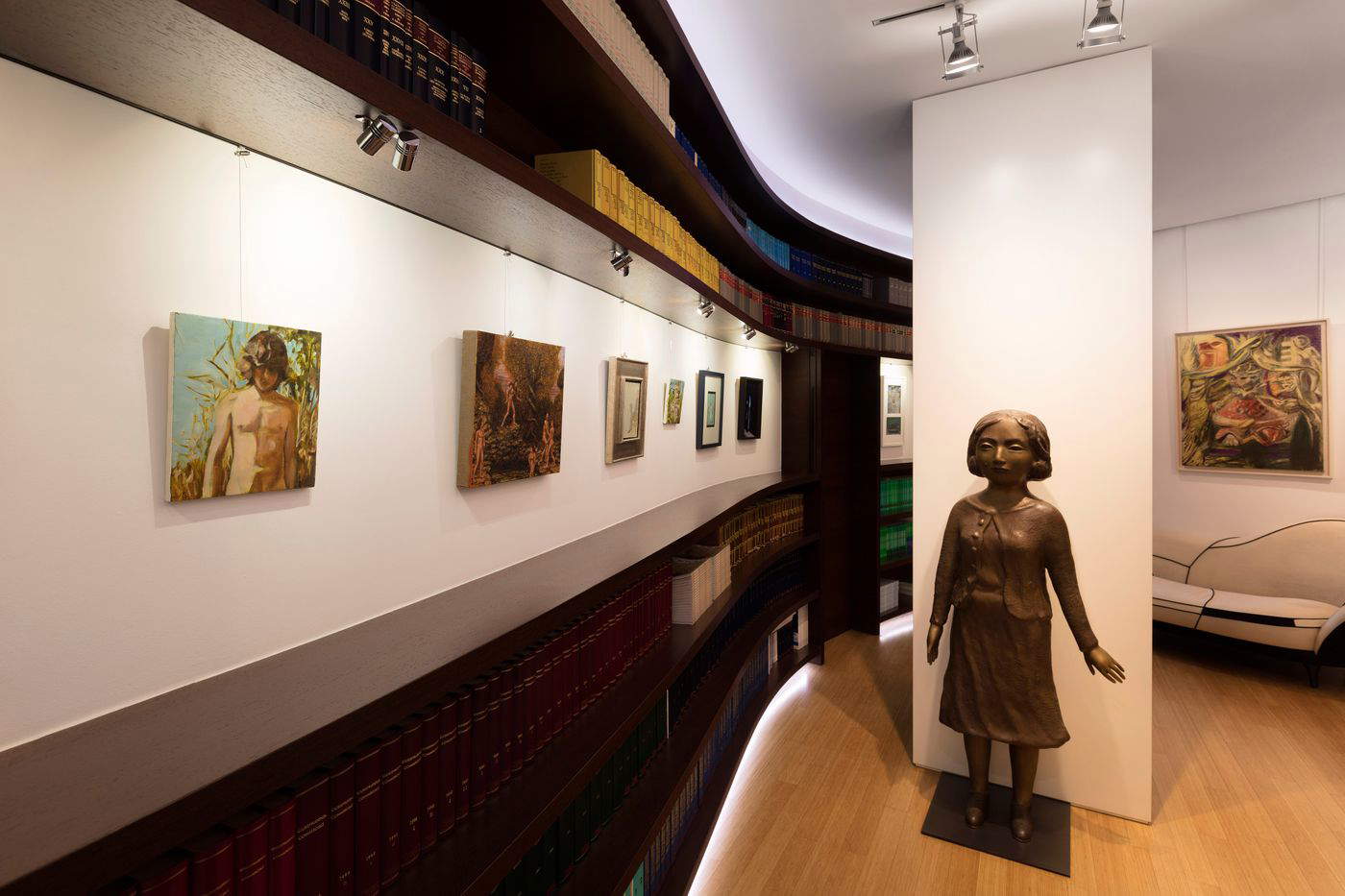Aspiring collectors, train your sensibilities!
At first glance on the art ecosystem, I would be inclined to say that pure collecting is on the wane; not that there is a lack of serial accumulators of objects or impromptu investors ready to make the bargain of a lifetime, but collecting is something else, and I sincerely hope, through these brief words of mine, to acquaint you with some of the fundamental points for my research.
I have a vivid memory of my first acquisition, it was the early 1990s, at that time I still had no idea what direction I wanted to take my collection, the very idea of consciously surrounding myself with a coherent set of objects was far from me.
I saw that wounded mermaid by Claudio Bonichi, grandson of the great Scipio, and I realized that in front of me there was not just an oil-painted panel but something that belonged to me, that completed me. There perhaps I realized that I was not simply looking for a work that was pleasing to the eye and had good meaning but that there was more to it.
That work, as well as all those that succeeded it, were and are true witnesses of time past, indispensable elements for a personal, truthful and historically relevant account of the history of Art.
At the time, there were no texts written by important collectors or curators ready to illustrate the art of collecting, and to this day, although this type of text is widespread, there is no manual to follow; it is a world made up of study and knowledge established in the field, in galleries, at fairs, at openings, and in all those environments where art is central. To know is to know, and I will never end thanking all the people who, especially in the beginning, taught me so much just by allowing me to listen, to understand why one artist could be selected for a gallery and another could not. There are no treaties, no written rules, the more you live with art, the more you understand the mechanisms behind it.
Here is perhaps the first and fundamental advice that I would give to all collectors who want to start doing it seriously or, at least, with awareness: attend art in all its facets, the meetings, the words exchanged with insiders are important insights and lessons for one’s growth.
Looking at my personal way of collecting, one cannot disregard the different peculiarities that characterize my dual but unified collection: the 1930s and Contemporary Art are areas that, in terms of research, market and acquisition methods, respond to different needs and mechanisms.
Looking for the masterpieces of the 1930s, those of the outsider artists on whom I have focused my attention, is the result of a focused and measured search; looking for the masterpieces of Badodi, Birolli, Guttuso, Mafai, Rosai, Sassu, requires some shrewdness; knowing the production of these artists, evidenced by the general catalogs, and attending the exhibitions dedicated to them, I always try to understand, from the texts and captions, where these works have gone. The passionate study of the texts allows me to know in which collections, from Turin to Rome, are the works that interest me and to engage in negotiations for acquisition.
There is to be considered that my work does not allow me to make frequent artistic visits out of doors; efforts must be concentrated toward those works that have a poetic, intrinsic poetry that is exciting and that, as such, are worthy, in my judgment, of remaining in art history, of telling a meaningful and untold story.

 Giuseppe Iannaccone
Giuseppe Iannaccone Giuseppe Iannaccone
Giuseppe IannacconeOf these specific works from the 1930s there are some whose provenance history, location or documentary history I have not been able, in due course, to verify; I often find them at auction and, at that point, I take action to complete the search and consider their entry into the collection.
Works belonging to private individuals, and not to the few galleries that still deal with the historical artists of my interest, become a real love chase, to quote a past text about my Collection; I would have many stories to tell about acquisitions made directly from the families of missing artists, all of them incredibly enjoyable but punctuated by grueling negotiations; it is difficult to convince collectors bound to the works by an emotional bond that my collection allows them total visibility that is more than deserved for their importance; this effort pays off when, looking at the works in the collection, one has the idea of having filled a hitherto empty or little-studied fissure in art history and one’s own personal research.
In my case, the 1930s, are investigated in all its branches, from the Six of Turin to Lombard Chiarismo, from Corrente to the Roman School, and each new acquisition creates new dialogues between the artists and between the different poetics expressed in their works.
For both branches of my collection, whether 1930s or contemporary art, the assumption that I will never tire of repeating applies: a masterpiece by a minor artist is better than a minor work by a great artist already crowned by art history.
Especially in the contemporary sphere, knowledge and networking is crucial; every day hundreds of previews of the best galleries in the world arrive at my personal email, from the most emblazoned to the small local realities that, even today, manage to amaze me with the quality of the work and the dedication reserved for the research of young artists.
There is no shortage of constant, daily phone calls to the many industry insiders who have known me for years, always ready to give me advice and a personal opinion on a new artist.
In any case, we need to know how to surround ourselves with competent and genuine people who warn us against cheating; not all that glitters is gold, we are in an ecosystem made, unfortunately, also of unprepared big investors who are ready to gamble, to inflate artists deserving of a more correct and linear growth; knowing how to defend oneself from this heady and malicious information is fundamental.
Big investors believe that great works are safe bets; I like to focus instead on quality and not price; I do not believe there is a correct budget or figure that differentiates one deserving artist from another less competent one; if anything, there is a subjective thought that should never be betrayed.
I have always focused on the artist’s poetics, on what motivates him to paint, to externalize his feelings in order to fix on a canvas, clay or marble that incredible set of human motions that characterizes every living being; starting from this, I will hardly get rid of a work and an artist in whom I deeply believe.
I am very proud of my choices because they are accountable solely and only to my sensibility; the works that are most valuable today within my collection were acquired amid criticism from those who did not understand that my selections came from the heart and not from a shrewd financial strategy. In the end, the choices of heart, study, and even a bit of instinct led me to make large investments without having the slightest intention of making any.
Collecting like this means really believing in artists, in their deep and complex work as sentinels of the present, without exploiting their fame or the “good time” for sale.
I do not want to dispense advice, I still have much to learn, but the eye, the mind, the heart predisposed to feeling as well as the ability to never betray oneself in the face of passing fads, are the best tools of the good collector, tools that need constant training for them to bear fruit.
Train your sensitivity, great Collections are born just like that, without recipes or instruction manuals.
This contribution was originally published in No. 15 of our printmagazine Finestre Sull’Arte Magazine.Click here to subscribe.
Warning: the translation into English of the original Italian article was created using automatic tools. We undertake to review all articles, but we do not guarantee the total absence of inaccuracies in the translation due to the program. You can find the original by clicking on the ITA button. If you find any mistake,please contact us.





























